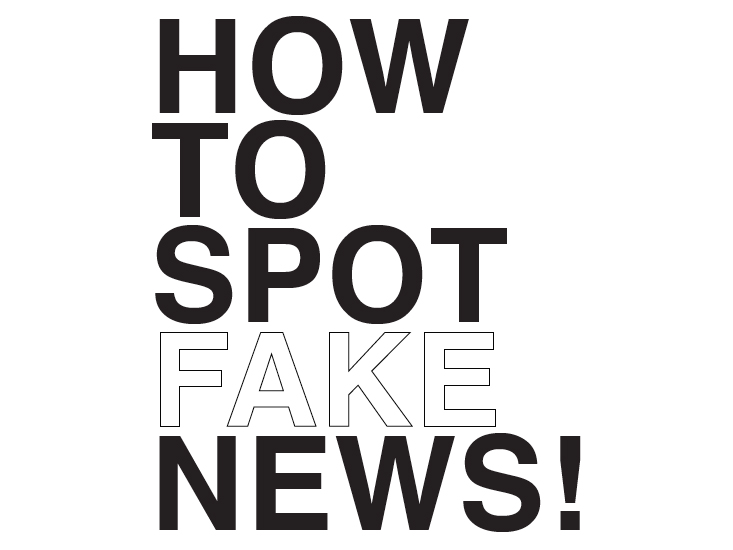Tips for Spotting Fake News
April 14, 2020
If you think digital media has brought about the age of fake news, you’re wrong. Did you know Edgar Allan Poe’s literary rival Rufus W. Griswold wrote an obituary full of falsehoods after his mysterious death which deeply shaded his reputation? Did you know Thomas Jefferson once said “that the man who never looks into a newspaper is better informed than he who reads them; inasmuch as he who knows nothing is nearer to truth than he whose mind is filled with falsehoods and errors”?
Fake news has been around for a long time and will be around for even longer. In other words: there’s no getting it to just go away. However, there are ways to tell the difference between what’s real and what’s fake. The best way to defend yourself against fake news and misinformation is by strengthening your news literacy. While not all news organizations adhere to every rule below, these points can serve as a general guide to spotting fake news.
1. Does the article have a byline and dateline?
A byline will tell you who wrote the article. A dateline will tell you when it was written. Typically, these are at the top of the page. They are often omitted in fake news stories.
2. Is the author of the article listed as a name or username?
Look at the dateline. Is there a real name there, or was the article written by someone like freedompatriot0704? There are some credible news organizations with username bylines, but more often than not, you will see a real name listed.
3. Is a real photo being used?
Fake news articles will often use badly photoshopped photos, stock photos or will leave out photos entirely. For example, a fake article might use a stock photo of police lights or a city landscape, but no photos of anything particularly pertinent to the actual story. Real news stories will use the most relevant photos as possible.
4. Do the grammar and punctuation follow traditional rules?
Professional news organizations will run articles through both desk editors and copy editors who follow a strict guide of punctuation and grammar rules, which is often AP Style. This means that words in headlines won’t be randomly capitalized, there won’t be spaces around periods or commas and words won’t be italicized for emphasis. Fake news articles sometimes look like spam emails in this sense.
5. Is the article editorialized?
When an article is editorialized, the author will put their own opinion into an article. This could look like loaded words or direct phrasing. Real news articles will remain as neutral as possible. Of course, some newspapers — like The Daily Utah Chronicle — have their own opinion desk, where the whole point of the article is the opinion.
6. Does the article include attributions?
Attributions are sources. Many times, these look like links in the text of an article. Look for phrases like “according to” or look for quotes. The more an article can be verified by other sources, the more reliable it is.
7. Is there a lede? Is the article vague?
The lede (or lead) of a story is generally the first line, which gives the gist of the article. Fake news articles will skip around the main point and away from details — especially names. “Florida man” is the infamous go-to phrase for headlines, but does the article go on to list a real name? Fake news articles may never get more specific than that. Minors can’t be named, and some people choose to remain off record, but a story with no names whatsoever should raise red flags.












Ray Buttars • Apr 16, 2020 at 11:50 am
Also important to notice:
– overuse of superlatives – worst, best, most, least (ever)
– inflammatory verbiage – massacre, pandemic, war and war references,
– playing emotion triggers – terms which conclude bigotry (racially, sexually, ethnically motivated) when author has no first hand knowledge
and many more…